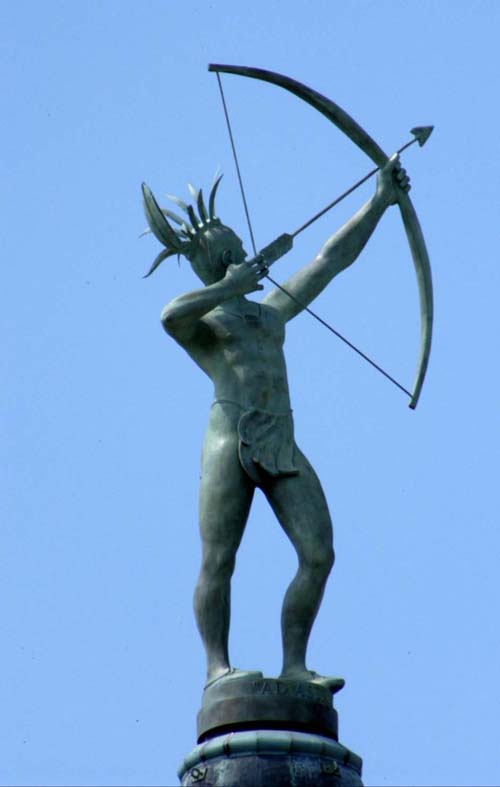The Lasting Bronze Legacy of Dr. Richard Bergen
 Dr. Richard Bergen (left) with a life-size replica
Dr. Richard Bergen (left) with a life-size replica
of Ad Astra, his son Richie (middle) who
modeled for the statue, and Jack Gillam, the
artist responsible for the sketches of Ad Astra
that Bergen worked from later on in the process.
Dr. Richard D. Bergen, an iconic artist whose majestic bronze sculpture Ad Astra graces the capitol building in Topeka, Kansas recently passed away April 22 at the age of 95. Of his many accomplishments, Bergen is well-known for his contribution to the state of Kansas, where he crafted more than 40 monumental bronze sculptures.
Originally born in Elizabeth, New Jersey, Bergen made Salina, Kansas his home for nearly seven decades after attending Bethany College, where he met his future wife at one of his very first classes. He decided to stay in Kansas, and pursue a life in art and education.
Thirty-five years ago, Bergen partnered with his son Rich, to form Bergen’s Sculpture Studio, a north Santa Fe Avenue gallery and work space. Together, they crafted monumental bronze sculptures and other works of public art.
Trifinity was the first of many sculptures he crafted, along with the Pony Express Rider in Marysville, Heritage Woman in Wichita Heritage Square, the Buffalo Soldier in Junction City, and most recently, the Terrible Swede on the Bethany College campus in Lindsborg.
Bergen’s sculpture, Ad Astra will leave a lasting legacy on the state, and beyond.
“With this project, I endeavoured to break down what made Ad Astra and how it interacts with local and national culture,” he revealed.
 Ad Astra, by Dr. Richard Bergen.
Ad Astra, by Dr. Richard Bergen.Photograph courtesy of the Kansas Historical Society.
“By looking at regional and public history, especially in reference to how people portray themselves and those seen as “others”, I hoped to promote the need to think critically about public portrayals and representations, especially when they are “official” representations that are commissioned by the government. Thoughtful representation is massively important, especially for groups that historically have been caricatured and stereotyped in media portrayals to oppress, persecute, or belittle the people whose identity is being used. Representations can propagate ideas that harm individuals and culture alike by emphasizing or reinforcing prejudices or divisions in society.”
Bergen put a lot of thought into the representation of this enigmatic public work, which was inspired by William Unrau’s book titled “The Kansa Indians: A History of the Wind People.”
“Obviously, not every statue is a great representation, but likewise, not every statue is a stereotype or negative representation,” he recalled. “My original outlook on Ad Astra was skeptical, not necessarily of the work itself, but of how critical of a thought-process was had in the original course of selection, design, and execution.I doubted that people spent time looking past obvious visual appreciation to analyze the implications of the piece, culturally, socially, or historically. This is not to say that I dislike Ad Astra. On the contrary, I think it does its job well; it carries the spirit of Kansas identity to heights for all to see. Whether or not people like the statue, it does command the Topeka skyline, dwarfed as it may be by larger commercial buildings.”
A virtual memorial and celebration of this iconic artist’s life can be viewed at www.BergenWasHere.com.Resources:
Also in this Issue:
- Bronzed in Triumph and Tragedy
- Copper Art Classes Move Online
- Classic Copper takes Root in the Garden
- The Lasting Bronze Legacy of Dr. Richard Bergen
- Colleges Get Creative to Bring the Studio Experience Home for Copper Printmaking Students
